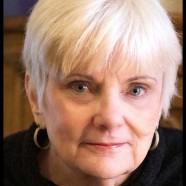
Things are looking up. I marvel that, exactly one year and three days after I last taught students in a university classroom, I will receive my first dose of the coronavirus vaccine. Over 90 million people have now received at least one dose, and the full powers of the government have been deployed to broaden and hasten the logistics around delivery. As I write, there are three different vaccines available which have significantly ramped production capacities in the last month or so.
And yet, everyone is tired of being locked down and of the distance among us that not even zoom can overcome. It takes real perseverance to hold the course and continue to drive the number of infections and deaths down as more citizens are vaccinated. In some states, governors are choosing to open up their states and remove the requirement to wear masks or to gather at sports or other events. The last year has shown us clearly what happens when such precautions are removed: the numbers will go back up, especially given the new variants of the coronavirus.
It does appear that some businesses and corporations (and perhaps even cities) in these opened states will continue to require masks and social distancing. And I do believe that firmly held positions can evolve over time, once the issue is no longer speculative. Family members, neighbors, and other members of a community may well get vaccinated just because “everyone is signing up.” Meanwhile, desperately needed funds to support state and local governments, schools and those who are out of work are nearly on the way from the federal government. The government is behaving as the government now, having taken the lead on the pandemic in late January. One of the next steps will be to safely create new jobs around improvements to our critical infrastructure, lifting up the economy as it gets back on its feet.
In both my first podcast with Ron Worman from The Great Conversation and a second podcast with global crisis expert Richard Levick, I fielded questions about teaching, especially when so much of it is relevant to issues like the pandemic, cybersecurity, and critical infrastructure that are front and center for our country. These two conversations remind me of how hard a teacher must work to keep the students’ attention online, especially if the quality of the internet connection, or the location from which one is attending class, or a general malaise that comes from having been online for a full year gets in the way of the student turning on their camera and actively participating in discussions. This is as true for kindergarten teachers trying to hold the attention of their students as it is for university faculty.
For myself, I have simplified my expectations of the students and their assignments while we are working online. I teach synchronous courses that last either two or three hours per session; and create a pathway so that a student who misses a class can review a recording of the whole session, and complete assignments independently rather than as a member of a small group. I do not penalize a student’s grade for being late with an assignment – I have learned that many of them are working full time to support their families as well as carrying a full load of courses. I took a writing exercise that I created years ago for my information ethics course and adapted it for my cybersecurity course too — it’s called a “weekly reflection” and asks the student to think about the readings and class discussion, then answer a question in no more than 250 words. I’ve been told by students how much that assignment has come to mean to them, both in terms of having created a weekly writing habit, and in sharpening their critical assessment skills. For me, it’s a way to measure the effectiveness of my teaching and to see where I need to go back over material or be clearer.
What does the future look like? We are just finishing the winter quarter, then will teach online for the spring quarter beginning late March. Barring new pandemic challenges, we hope to be back in the classroom for fall quarter, which begins late September. Just as we have been changed by the experience of teaching online for three quarters, so are our students. It will be 1.5 years away from the campus, along with the social isolation and the ever-present anxiety that makes us wonder what a post-COVID world will look like.
We can begin to imagine such a time, not by looking back, but by boldly imagining what depth and light we will bring to person-to-person interactions, to our classrooms and workplaces -- and, despite the pain and loss of over half a million citizens – in the understanding that we are still standing.
Originally Published in ASA News & Notes March 8, 2021









